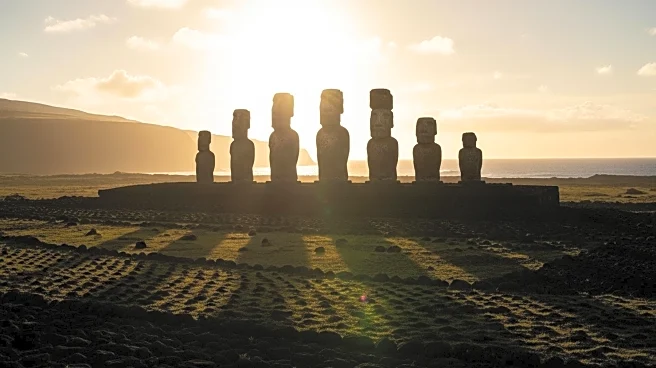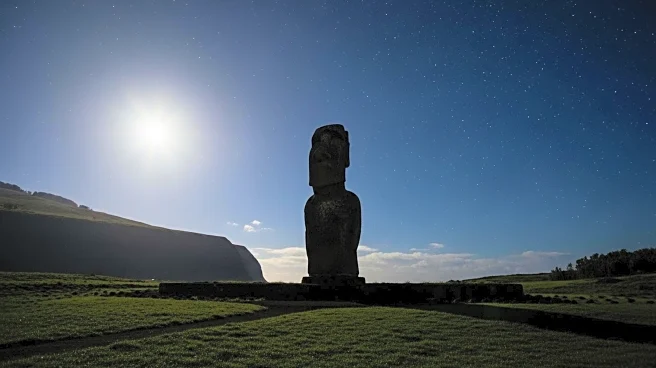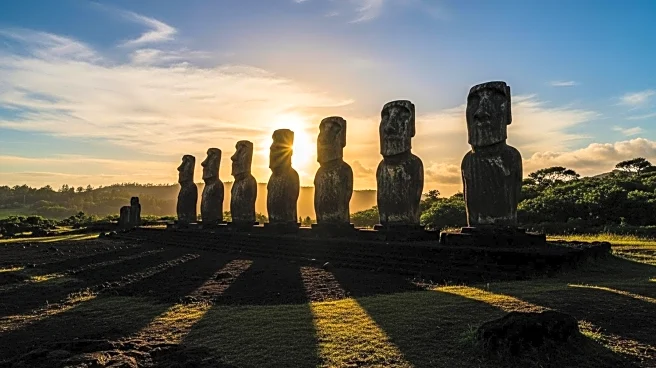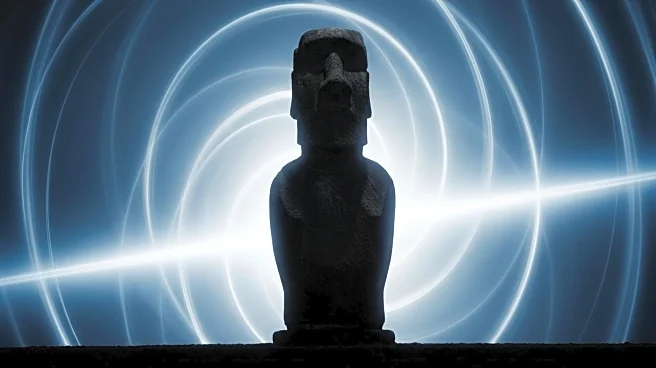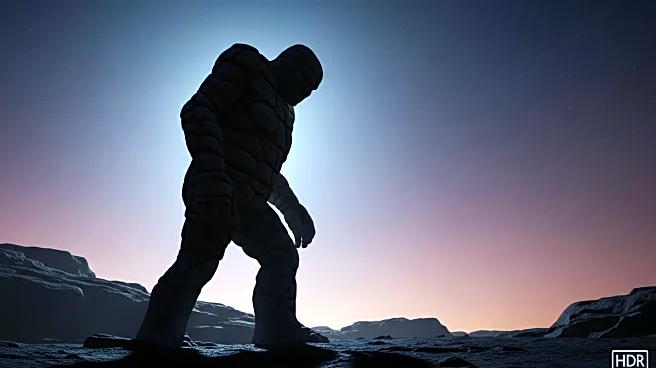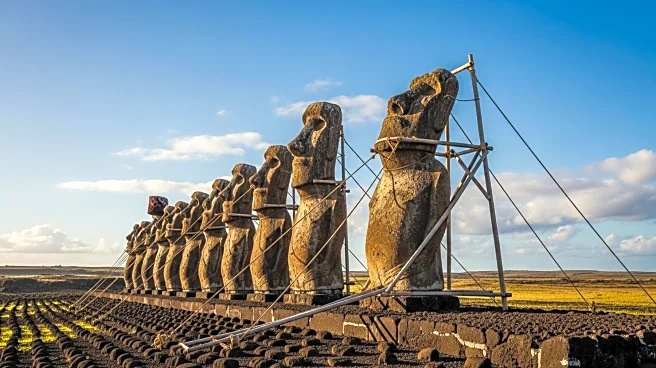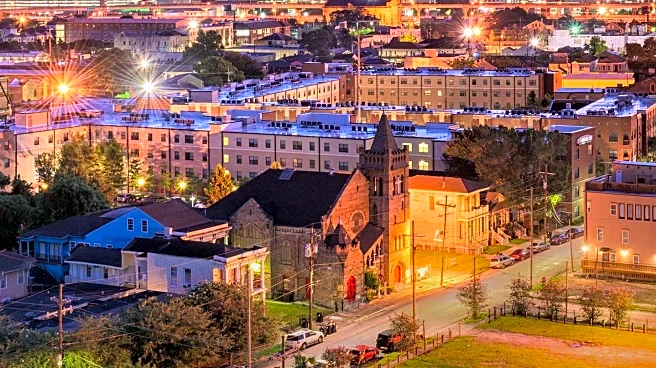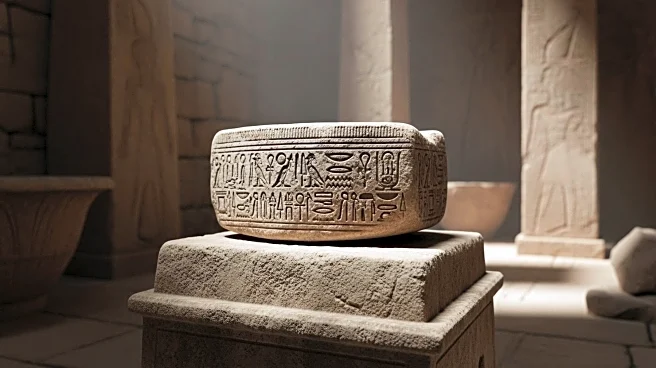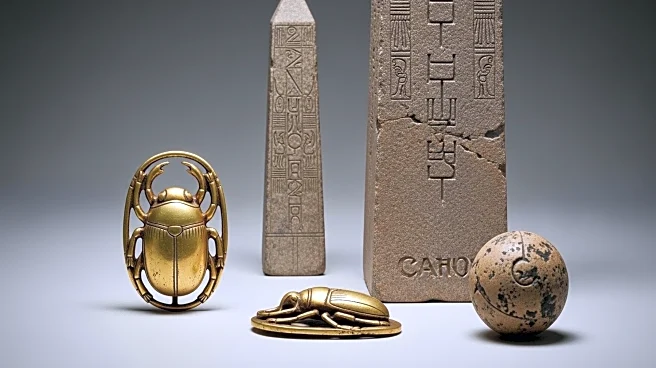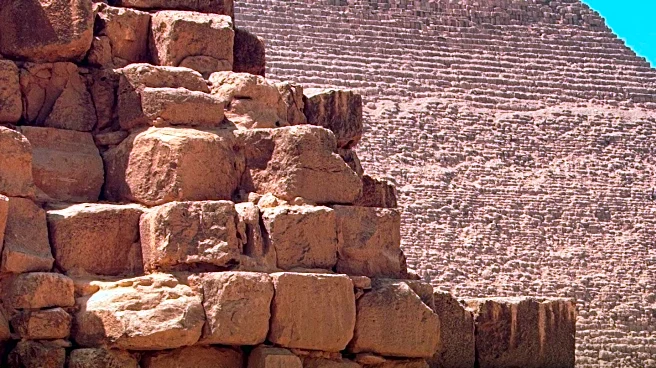What's Happening?
A team of anthropologists, led by Carl Lipo and Terry Hunt, has proposed a new theory regarding the transportation of the moai statues on Easter Island. The researchers conducted experiments and created high-resolution 3D models of 962 moai statues to understand their design and potential methods of movement. They tested the hypothesis that the statues could be 'walked' from their quarry to ceremonial platforms using ropes and a zig-zag motion. This experiment demonstrated that 18 people could move a 4.35-ton replica moai 330 feet in 40 minutes, challenging previous theories that suggested the use of wooden transport devices or alien involvement.
Why It's Important?
This discovery is significant as it provides a scientific explanation for one of the enduring mysteries of Easter Island, highlighting the ingenuity of the Rapa Nui people. The findings suggest that the Rapa Nui engineered roads specifically to facilitate the movement of the statues, reflecting their advanced understanding of physics and engineering. This research not only honors the Rapa Nui's achievements but also offers insights into ancient engineering practices that could inform modern techniques.
What's Next?
The researchers' 'walking moai hypothesis' aligns with Rapa Nui oral traditions, which describe the statues as 'walking' from the quarry. This theory may lead to further studies on the cultural and historical significance of the moai and the Rapa Nui's engineering methods. The debate over the correct explanation for moai transportation continues, with this new theory potentially influencing future archaeological research and interpretations of Rapa Nui history.
Beyond the Headlines
The study underscores the importance of integrating scientific methods with cultural narratives to understand historical phenomena. It challenges the notion of ancient civilizations as primitive, instead showcasing their sophisticated problem-solving abilities. This research may inspire a reevaluation of other historical mysteries, encouraging a blend of scientific inquiry and respect for indigenous knowledge.

